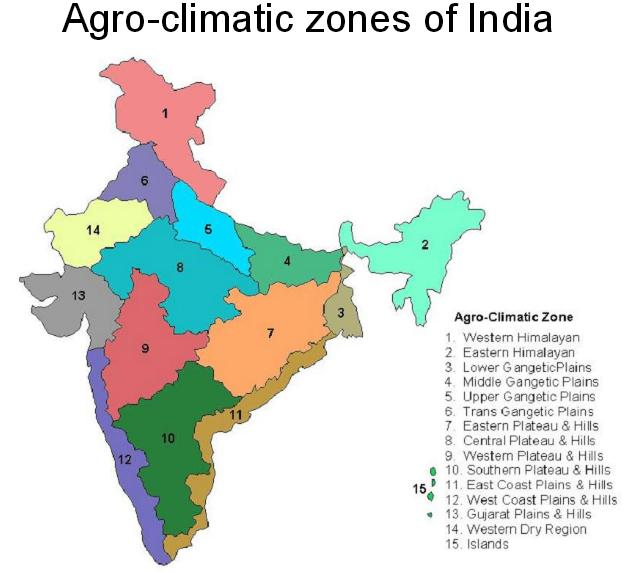-
24 Jan 2025
GS Paper 1
Geography
Day 47: How do agro-climatic zones influence the pattern of agricultural practices in India? Illustrate with examples of specific zones and their dominant cropping systems.
Approach
- In introduction, define agro-climatic zones and highlight their role in agricultural planning.
- In the body, explain the influence of agro-climatic zones on agricultural practices with detailed examples, including reasons for specific crop suitability.
- Conclude suitably.
Introduction
Agro-climatic zones are regions categorized based on their climatic conditions, soil types, and topography to optimize agricultural practices. In India, the identification of 15 agro-climatic zones ensures region-specific crop cultivation, leading to better productivity and resource management.
Body
How Agro-Climatic Zones Influence Agricultural Practices:
- Climatic Suitability: Crops are selected based on temperature, rainfall, and humidity. For instance, rice thrives in high rainfall areas, while wheat prefers cooler winters.
- Example: The Eastern Coastal Plains with abundant monsoons focus on rice cultivation.
- Soil Fertility and Composition: The soil type influences the choice of crops, fertilizers, and farming methods.
- Example: Black soil in the Deccan Plateau is highly suitable for cotton due to its moisture-retaining capacity.
- Topographical Features: Mountainous zones use terracing to grow crops like tea, while plains are ideal for large-scale cereal cultivation.
- Example: Tea plantations in the Himalayan region utilize terraced slopes and cool climates.
Some Examples of Specific Zones and Their Dominant Cropping Patterns
- Western Himalayan Region (Jammu & Kashmir, Himachal Pradesh, Uttarakhand):The cool climate with moderate rainfall supports horticulture and temperate crops. Barley and maize are staples suited for the hilly terrain.
- Dominant Crops: Apple, barley, wheat, maize.
- Indo-Gangetic Plains (Punjab, Haryana, Uttar Pradesh, Bihar): Fertile alluvial soil, abundant irrigation facilities, and favorable monsoonal rainfall make this region ideal for high-yield crop farming.
- The success of the Green Revolution further boosted rice and wheat cultivation.
- Dominant Crops: Rice, wheat, sugarcane.
- Eastern Plateau and Hills (Jharkhand, Odisha, Chhattisgarh): This zone has poor soil fertility, undulating terrain, and heavy dependence on rainfed agriculture, making it ideal for resilient crops like millets and oilseeds.
- Dominant Crops: Millets, pulses, rice, oilseeds.
- Western Dry Region (Rajasthan, Gujarat): Low rainfall, sandy soils, and extreme arid conditions make drought-resistant crops like bajra (pearl millet) and oilseeds suitable for cultivation.
- Dominant Crops: Bajra, pulses, oilseeds.
- Coastal and Deltaic Regions (Kerala, Tamil Nadu, Andhra Pradesh): The humid tropical climate, fertile deltaic soils, and proximity to water bodies favor water-intensive crops like rice and cash crops such as coconut and spices.
- Dominant Crops: Rice, coconut, spices.
Conclusion
The alignment of agricultural practices with agro-climatic conditions ensures optimal productivity, sustainability, and resilience to climate change. Government schemes like the National Mission for Sustainable Agriculture (NMSA) leverage agro-climatic zones to promote climate-resilient agriculture. A well-planned, zone-specific approach to agriculture is crucial for achieving food security and sustainable development in India.





